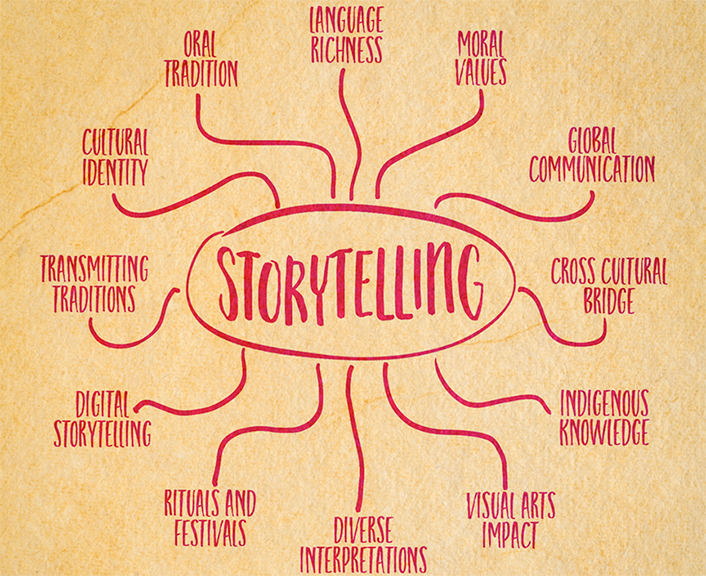
Share stories through oral traditions.
Early in the school year, learners were invited to create story vines to tell their “story” as a way to get to know each other. Their stories included aspects such as family history, family structure, pets, interests, hobbies, favourite things, and so on. Learners chose what information they wanted to share with others, and sometimes, learners chose to write a fictional story if they were not able to share their own.
To begin, learners learned about the integral role that oral storytelling plays in Indigenous culture. Traditionally, important histories, stories, and teachings are transmitted to new generations orally as a method to gather and preserve information. Learners learned that story vines are a tool in oral storytelling intended to tell a story without written words, made of different fabrics that are woven together to represent various elements of a story.
To begin their story vine, the teacher asked learners driving questions to prompt their thinking. They learned how to craft open-ended questions and were encouraged to interview significant adults in their lives to learn about their own history and to better understand the factors that shape who they are. They learned about symbolism so that they could carefully choose the elements that would act as prompts for their story. Learners crafted the elements of their vines from different materials from the classroom and beyond. Sometimes, learners brought items from home that had sentimental value and attached them to their vine.
Once the vines were created, the teacher and learners co-constructed criteria for empathetic and active listening so that learners were better prepared to be supportive listeners to others’ stories. The learners shared their stories orally in a sharing circle using the vines as prompts and finally displayed their vines in the classroom or hallways.